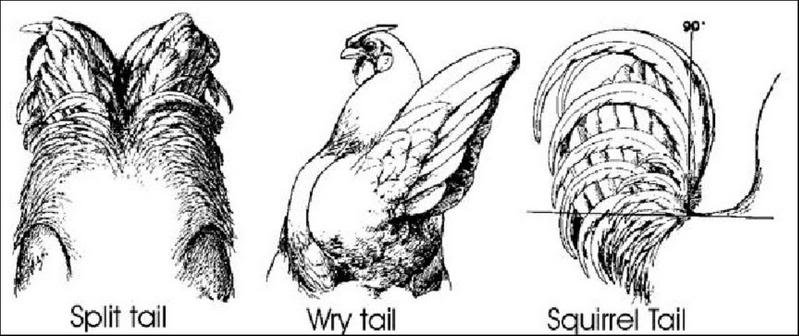Faults in Silkies.

Things to avoid when breeding Silkies:
Remember that American standards differ from UK standards as well as those in place around the world.
Not every bird is perfect they all have their faults in different ways. For Silkies if it has 5 toes, good body, fabulous silk, nice neat crest, good blue in lobes, dark skin then it is a Silkie but show birds are so much more.
If you look at the rooster in the header image above you will notice it is missing the plum colour necessary to make it a proper Silkie cockerel.
Faults is chickens in general and Silkies in particular take many forms. These are in no particular order and some may disqualify a bird and others will not.
Defects resulting in a disqualification are:
- Single comb
- More or less than 5 toes.
- Green, yellow or white legs.
- Featherless legs or feet.
- Vulture hocks (hard feathering in the hock which points down as in a Sultan)
Plumage and feathers:
It should be silky and fluffy with hair-like feathers throughout. The feathers should be profuse and thick, and cover the thighs, run down the shanks and cover the middle and outer toes.
Below: Example of the fluffy feathers of a Silkie chicken.
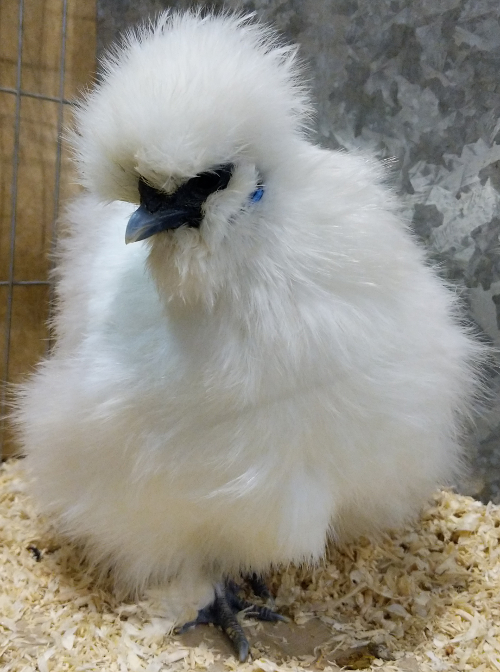
The Silkie feathering is recessive and as such, if a Silkie feathered bird is mated to a non-Silkie feathered bird (such as a Pekin) the resultant offspring will have normal feathers.
Wings:
There are three main faults that can be seen in Silkie wings and all are considered disqualifications.
- Split wing is where the feathers have a gap between the primary and secondary feathers or at the top of the wing between the primaries. You will always know when a wing is split as the wing feels weak and has a lot of give when handling it. Both sets of feathers should be level. With split wing on set of feathers will be longer than the other.
- Slipped wing is when the wing does not return to its natural folded position when opened. The primary feathers may overlap in reverse order or there is a tendency for the primary feathers to be held outside the secondaries when the wing is closed. The primaries should tuck under the secondaries but instead the reverse happens. The primary feathers show from the outside and may even be twisted. Angel wing is slang for slipped wing in chickens. Actual Angel wing is found in water fowl.
- Twisted feather is when a feather is in the slipped wing position but is turned upside down so that you are seeing the bottom side of the feather.
Legs:
The legs should be short and wide set but not bowed. They should be well fluffed at the thigh and moderately feathered along the shank (no hard feathers). They should also not be too long as in this example below.
Below: Long legs in Silkies.
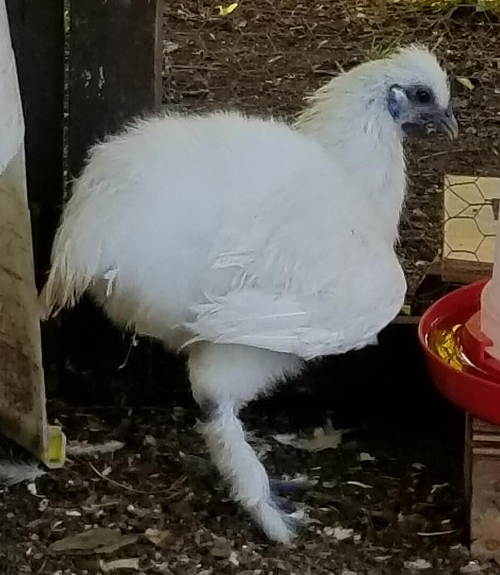
Feet:
The toes should be 5 in number with 1 nail on each. 6 toes in Silkies is not uncommon.
Below: Pincer toes which look like a crabs claw are undesirable.
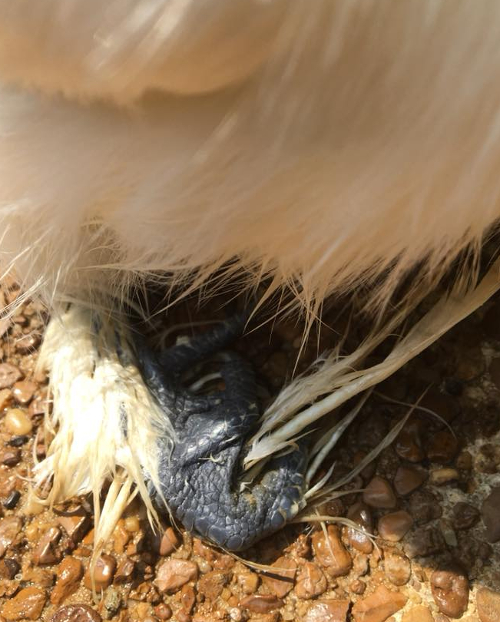
Webbing between the last two toes is undesirable even if it had the correct amount of toes
Scaly leg, incorrectly separated toes and incorrect number of toes are all foot faults. Also, the Silkie should have feathering down their middle toe.
Webbing is not desired.
Poly-dactyl - The number of toes can be affected by incubation temperature.
It’s complicated because the poly-dactyl gene isn’t just a straight forward incomplete dominant either, it has irregular penetration and can be impacted by other things. That means both the inheritance and expression can be unpredictable. A chick may inherit the gene but not express and while they may not express it they can pass it on. Or it may inherit the gene and get 6 toes rather than 5.
Below: The variation in Silkie feet and toes is huge.

I’ve even seen where instead of an extra toe it just creates a really long 4th toe. There’s also “if a four toe chick hatches you can be certain both parents carry it” is also incorrect. Things even just like incorrect incubation temp can cause poly-dactyl to not express. So both parents can pass it on but it doesn’t express. I’d hate to see people getting rid of good breeding stock because of a 4 toed chick
Comb:
The comb is often described as walnut, strawberry or cushion (the preferred term) and should be slightly rounded in the male (more wide than long) with an indentation running left to right and many small lumps across it (it has been likened to a flattened mulberry). In the female the comb should be very small and hidden by the crest (although the comb should not split the crest).
In Silkies the size, shape and colour of the comb are important.
Colour:
Colour should be right for the Silkie and consistent. No opposite or differently coloured feathers.
Below: Consistent colour in Silkies:
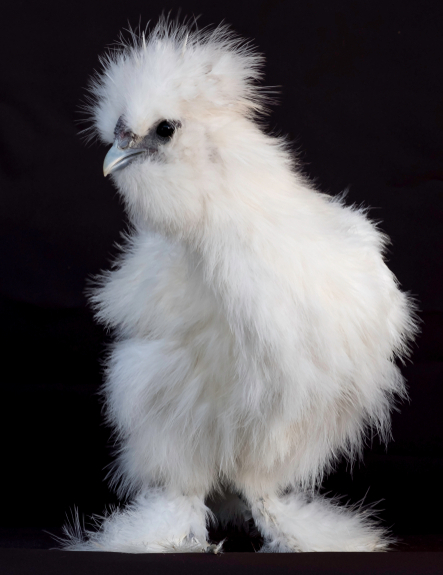
The shade should be corrects as well and not too light or dark.
Head and beak:
Short or twisted mandibles, often the lower beak is effected.
Also the eye colour of the Silkie should be black, but can go as light as dark brown.
Defects which will reduce points are:
- Hard feathers.
- Green in the beak.
- Horns on the comb.
- Red face, comb or wattles.
- No crest or poor crest.
- Crest obscuring the eyes.
- Split crest.
- Poor colour to either plumage or skin.
- Green soles.
- Split wings (where there is a gap between the primaries and secondaries).
- Light eyes.
- Reduced toe size or absence of a nail.
A wry tail is in fact a skeleton-failure! (Taylor, 1971). And the inheritance of that is very complex.
See how to improve your stock of show chickens through good breeding.
Below: Tail faults in chickens.
